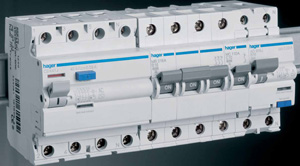 A residual-current device (RCD), or residual-current circuit breaker (RCCB), is an electrical wiring device that disconnects a circuit whenever it detects that the electric current is not balanced between the energized conductor and the return neutral conductor.
A residual-current device (RCD), or residual-current circuit breaker (RCCB), is an electrical wiring device that disconnects a circuit whenever it detects that the electric current is not balanced between the energized conductor and the return neutral conductor.
According to Department of Commerce Australia statistics in the past 17 years, 29 people including eight children have been electrocuted in homes in Western Australia. Twenty-three of these deaths could have been prevented if Residual Current Devices (RCDs) had been fitted to the power and lighting circuits.
Electrical hazards are often hidden and can be difficult to identify, such as a small hole in an extension lead or a power board damaged internally. Electrical accidents occur in an instant. Ground Fault Condition is defined as: An unintentional, electrically conducting connection between an ungrounded conductor of an electrical circuit and the normally non-current-carrying conductors, metallic enclosures, metallic raceways, metallic equipment or earth. Such an imbalance may indicate current leakage through the body of a person who is grounded and accidentally touching the energized part of the circuit. A lethal shock can result from these conditions.
RCDs detect an imbalance in the electrical current and disconnect the power within 10 to 50 milliseconds, preventing electrocution and fire. RCDs are the only device that can protect your family from these hidden dangers and give them a second chance.
RCDs are generally tested by the installer to verify correct operation. To ensure that the RCDs fitted to your home perform correctly, they must be tested at regular intervals. EnergySafety recommends that each RCD be tested every three months.
For more information go to Energy Safety – Department of Commerce Australia.